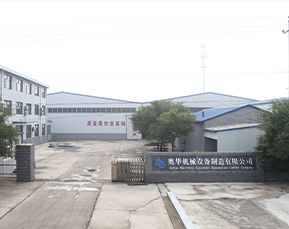 Afrikaans
Afrikaans  Albanian
Albanian  Amharic
Amharic  Arabic
Arabic  Armenian
Armenian  Azerbaijani
Azerbaijani  Basque
Basque  Belarusian
Belarusian  Bengali
Bengali  Bosnian
Bosnian  Bulgarian
Bulgarian  Catalan
Catalan  Cebuano
Cebuano  Corsican
Corsican  Croatian
Croatian  Czech
Czech  Danish
Danish  Dutch
Dutch  English
English  Esperanto
Esperanto  Estonian
Estonian  Finnish
Finnish  French
French  Frisian
Frisian  Galician
Galician  Georgian
Georgian  German
German  Greek
Greek  Gujarati
Gujarati  Haitian Creole
Haitian Creole  hausa
hausa  hawaiian
hawaiian  Hebrew
Hebrew  Hindi
Hindi  Miao
Miao  Hungarian
Hungarian  Icelandic
Icelandic  igbo
igbo  Indonesian
Indonesian  irish
irish  Italian
Italian  Japanese
Japanese  Javanese
Javanese  Kannada
Kannada  kazakh
kazakh  Khmer
Khmer  Rwandese
Rwandese  Korean
Korean  Kurdish
Kurdish  Kyrgyz
Kyrgyz  Lao
Lao  Latin
Latin  Latvian
Latvian  Lithuanian
Lithuanian  Luxembourgish
Luxembourgish  Macedonian
Macedonian  Malgashi
Malgashi  Malay
Malay  Malayalam
Malayalam  Maltese
Maltese  Maori
Maori  Marathi
Marathi  Mongolian
Mongolian  Myanmar
Myanmar  Nepali
Nepali  Norwegian
Norwegian  Norwegian
Norwegian  Occitan
Occitan  Pashto
Pashto  Persian
Persian  Polish
Polish  Portuguese
Portuguese  Punjabi
Punjabi  Romanian
Romanian  Russian
Russian  Samoan
Samoan  Scottish Gaelic
Scottish Gaelic  Serbian
Serbian  Sesotho
Sesotho  Shona
Shona  Sindhi
Sindhi  Sinhala
Sinhala  Slovak
Slovak  Slovenian
Slovenian  Somali
Somali  Spanish
Spanish  Sundanese
Sundanese  Swahili
Swahili  Swedish
Swedish  Tagalog
Tagalog  Tajik
Tajik  Tamil
Tamil  Tatar
Tatar  Telugu
Telugu  Thai
Thai  Turkish
Turkish  Turkmen
Turkmen  Ukrainian
Ukrainian  Urdu
Urdu  Uighur
Uighur  Uzbek
Uzbek  Vietnamese
Vietnamese  Welsh
Welsh  Bantu
Bantu  Yiddish
Yiddish  Yoruba
Yoruba  Zulu
Zulu tail drum pulley
Understanding Tail Drum Pulleys A Comprehensive Overview
In the intricate world of mechanical engineering and conveyor systems, the tail drum pulley plays a pivotal role in ensuring smooth and efficient operation. Not only does it serve as a crucial component in various industrial applications, but it also helps in the overall functionality of conveyor belts. This article delves into the significance, types, and maintenance of tail drum pulleys, providing engineers and industry professionals with a well-rounded understanding of this essential mechanism.
What is a Tail Drum Pulley?
A tail drum pulley, often referred to as a tail pulley or tension pulley, is located at the end of a conveyor system. Its primary function is to help maintain the tension of the conveyor belt, allowing for optimal performance and preventing slippage. The tail drum pulley also plays a critical role in guiding the belt, ensuring proper alignment as it moves through the system.
Tail drum pulleys are usually engineered from durable materials, such as steel or aluminum, to withstand the rigorous demands of heavy loads and continuous operation. Their design can vary greatly depending on the specific requirements of the application, including dimensions, capacity, and environmental considerations.
Types of Tail Drum Pulleys
There are various types of tail drum pulleys, each suited for specific applications
1. Drive Pulleys While primarily associated with the head end of a conveyor, some systems utilize a tail drum designed to incorporate a drive mechanism. This setup can be beneficial in certain layouts, allowing for reverse operations or providing additional tension control.
2. Return Pulleys These are designed specifically for the return section of conveyor belts. They help guide the belt back to the starting point while also maintaining tension.
3. Take-Up Pulleys These adjust the overall length of the belt, compensating for any elongation that may occur over time. This type is essential in systems requiring fine-tuning to keep the belt taught.
4. Heavy-Duty Pulleys These are utilized in applications involving substantial loads and harsh environments, such as mining or construction. Designed to withstand extreme conditions, heavy-duty tail drum pulleys provide reliability and high performance.
5. Custom Pulleys For specific applications with unique requirements, custom-designed tail drum pulleys may be necessary. Engineers work with manufacturers to create a solution tailored to the needs of the operation.
Importance of Tail Drum Pulleys
tail drum pulley

Tail drum pulleys are crucial for several reasons
- Tension Management Proper belt tension is essential for optimal operation. If a belt is too loose, it may slip; if it’s too tight, it can lead to excessive wear or failure. - Belt Alignment A tail drum pulley plays a vital role in ensuring the conveyor belt maintains proper alignment throughout its operation, which can prevent breakdowns and improve efficiency.
- Load Distribution Proper design and function of a tail drum pulley help distribute the load evenly across the belt, which is critical for heavy transport systems.
- Operational Efficiency By maintaining tension and alignment, tail drum pulleys contribute significantly to the overall efficiency of the conveyor system, reducing downtime and maintenance costs.
Maintenance and Care
To ensure the longevity and efficiency of tail drum pulleys, regular maintenance is essential. Key maintenance practices include
- Routine Inspections Regularly check for signs of wear, misalignment, or damage. Early detection of issues can prevent larger problems down the line.
- Lubrication Ensure that bearings and moving parts are adequately lubricated to reduce friction and wear.
- Tension Adjustments Monitor and adjust the tension of the belt as needed to ensure optimal operation.
- Replacing Worn Parts Promptly replace any worn or damaged components to maintain system integrity.
Conclusion
In summary, tail drum pulleys are integral to the functionality and efficiency of conveyor systems. Understanding their variety, importance, and maintenance needs allows engineers and professionals to optimize the performance and longevity of their systems. As industries continue to evolve, the role of these mechanical components will undoubtedly be critical in meeting the growing demands for efficiency and reliability.
-
Revolutionizing Conveyor Reliability with Advanced Rubber Lagging PulleysNewsJul.22,2025
-
Powering Precision and Durability with Expert Manufacturers of Conveyor ComponentsNewsJul.22,2025
-
Optimizing Conveyor Systems with Advanced Conveyor AccessoriesNewsJul.22,2025
-
Maximize Conveyor Efficiency with Quality Conveyor Idler PulleysNewsJul.22,2025
-
Future-Proof Your Conveyor System with High-Performance Polyurethane RollerNewsJul.22,2025
-
Driving Efficiency Forward with Quality Idlers and RollersNewsJul.22,2025





























